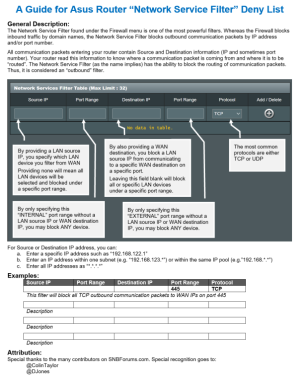ColinTaylor
Part of the Furniture
Yes, I've seen that image before. Ignore it, it's gibberish. None of those numbers make any sense.When I look at this example: https://www.asus.com/support/FAQ/1013636/, it looks like the "source" was a WAN IP.
EDIT: Maybe someone should ask Asus to correct that FAQ. This is not the first time someone's been confused by it.
EDIT 2: The other error in that FAQ is "The two options TCP and TCP All are the same". This is untrue, they are completely different. In fact the "TCP ALL" option was removed from Merlin's firmware as it was misleading and functionally useless.
Last edited:


